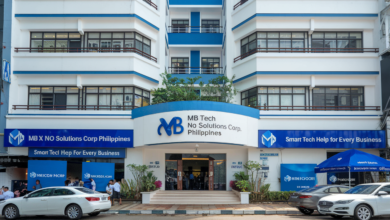CMIT 351 – Project 1: A Simple Guide to Your First Networking Project

CMIT 351 – Project 1 can feel big and confusing at first. But don’t worry! In this blog post, we’ll break it down into super easy steps. If you’re a beginner, this guide is just for you.
CMIT 351 – Project 1 is all about learning how computer networks talk to each other. You’ll get to build a small network, understand IP addresses, and even learn how routers and switches work. Let’s walk through everything step-by-step like a fun school project!
What is CMIT 351 – Project 1 All About?
CMIT 351 – Project 1 is your first hands-on step into computer networking. You get to build a small network and learn how computers talk to each other. This project is like playing with building blocks—but for computers.
You don’t need to be a tech expert to understand this project. It’s made to help beginners. The goal is to understand how data moves between devices using wires, switches, and routers.
This project also helps you learn about IP addresses. These are like house numbers for computers. You’ll also learn how to draw network maps, which show how everything connects.
When you complete CMIT 351 – Project 1, you’ll understand the basics of networking. And guess what? These basics are super useful in real-life tech jobs too!
Tools You’ll Need to Start CMIT 351 – Project 1
Before you start, you need a few tools. Don’t worry, most of them are simple and easy to use. Some are already on your computer, and others you can download for free.
The most common tool is Cisco Packet Tracer. It’s a fun tool that lets you build virtual networks. You drag and drop routers, switches, and cables—just like a puzzle.
You’ll also need a basic text editor like Notepad to take notes or write down IP addresses. Keeping track of what you do is very helpful.
And of course, you need a computer and internet connection. Try to work in a quiet place so you can focus and learn better.
Understanding the Basics of Networking for Project 1
Networks are how computers talk to each other. Just like phones need lines to make calls, computers need wires or wireless signals to send data.
In this project, you’ll learn about LANs (Local Area Networks). These are small networks, like the ones in homes or schools. You will build one just like that!
You will also see how switches and routers work. A switch connects devices in the same network. A router connects one network to another, like to the internet.
Each device in your project will have its own IP address. This helps the data know where to go—just like writing the right address on an envelope.
Step-by-Step Walkthrough of CMIT 351 – Project 1 Tasks
Starting CMIT 351 – Project 1 can feel tricky, but take it one step at a time. It’s just like building LEGO—start with the basics.
First, set up your workspace in Packet Tracer. Add the devices you need: PCs, switches, and a router. Connect them using straight or crossover cables.
Then, assign IP addresses to each device. Make sure each one is in the right range so they can “talk” to each other.
Lastly, test the network using the ping command. If it works, your devices are connected! If it doesn’t, go back and check the IP addresses or cable connections.
Common Mistakes to Avoid in CMIT 351 – Project 1
Even smart students make simple mistakes in CMIT 351 – Project 1. Knowing them now can help you avoid them.
Sometimes people connect cables to the wrong ports. Always double-check which port goes where. A small mistake can break the whole network.
Another common error is typing the wrong IP address. Computers need perfect numbers to work together. One wrong digit can stop the connection.
Some forget to save their work in Packet Tracer. Always save often so you don’t lose your network if something crashes.
Tips to Make CMIT 351 – Project 1 Super Easy
Break the Project into Small Parts
- Start with just two devices and test their connection
- Add more pieces slowly and test each time
- Use simple IP addresses like 192.168.1.1 to keep things clear
Keep a Notebook or Digital Notes
- Write down what IPs you used
- Draw a simple network map by hand
- Track what worked and what didn’t
Use the “Ping” Tool to Test Connections
- Type ping followed by the IP address
- Green reply? Good connection!
- No reply? Time to troubleshoot
Sample Diagrams and Examples for CMIT 351 – Project 1
Sometimes pictures make things easier to understand. That’s why diagrams are super helpful in CMIT 351 – Project 1. They show you how your network should look.
You can draw a network diagram by hand or use Packet Tracer to do it. Put the router in the middle, then add switches, and connect the PCs.
Try using different colors for cables in your diagram. This helps you see what connects to what. It’s also great for troubleshooting later.
Always label your devices and write down the IP addresses next to them. When things don’t work, a good diagram will help you fix it fast.
Why CMIT 351 – Project 1 Matters in Real-World IT Jobs
This project is not just schoolwork—it teaches you real IT skills. Many jobs in tech need you to know how to build and manage networks.
In real life, companies need people who can fix internet problems and set up new computers. That’s exactly what CMIT 351 – Project 1 helps you learn.
If you want to work as a network technician or IT support, this project gives you your first practice. It’s like a baby step into the tech world.
The things you learn—like IP addresses, routers, and switches—are used every day in offices, schools, and even hospitals. That’s why it’s important.
Simple Terms Explained: IPs, Routers, and Switches
What’s an IP Address?
- IP means Internet Protocol
- It’s like your computer’s home address
- Every device in your network gets one
What’s a Router?
- It connects different networks together
- Like a traffic cop for data
- Sends info to the right place
What’s a Switch?
- It connects many devices in the same network
- Think of it like a power strip for computers
- It keeps the data moving quickly
Checklist: Did You Finish Everything in CMIT 351 – Project 1?
Before you turn in your work, let’s double-check that you’re done. This helps you avoid losing points or making silly mistakes.
- Did you connect all your devices in Packet Tracer?
- Did you assign the right IP addresses to each device?
- Did you test all connections using the ping command?
- Did you draw and label your network diagram?
- Did you save your project file before closing?
If you said yes to all of these, great job! You’ve just finished CMIT 351 – Project 1 the right way.
Conclusion
CMIT 351 – Project 1 is a great way to start learning about computer networks. It may look hard at first, but once you break it into small steps, it becomes super fun and easy to understand. Just like putting together a puzzle, you build your network one piece at a time.
If you follow the steps, use your tools, and check your work, you’ll do great! This project is not just for school—it’s a big step toward real IT skills. So be proud, learn lots, and have fun building your first computer network!
FAQs About CMIT 351 – Project 1
Q: What is CMIT 351 – Project 1 about?
A: It’s a beginner project that teaches you how to build a small computer network using tools like Packet Tracer.
Q: Do I need to be good at computers to do this project?
A: No, you just need to follow the steps slowly. It’s made for beginners and easy to learn with practice.
Q: What is the most important part of the project?
A: Setting up your devices and IP addresses correctly. If those are right, your network will work well.
Q: What if my network doesn’t work in Packet Tracer?
A: Check your cables, ports, and IP addresses. Most mistakes come from small typing errors.
Q: Can this project help me in real jobs?
A: Yes! These are the same skills used by IT support and network technicians in real companies.




